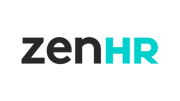
Setting and measuring goals is a must for organizations aiming to thrive. The two most popular frameworks for this kind of process are Objectives and Key Results (OKRs) and Key Performance Indicators (KPIs).
Even though these two are geared toward achieving success, they do, however, have distinctive characteristics that set them apart. OKRs focus on inspiring and measurable objectives, and KPIs provide specific metrics to evaluate performance. Choosing the right framework depends on the organization’s objectives and desired outcomes.
You’re probably wondering, “Which is best for me to use?” so let’s take a deeper look at OKRs and KPIs and highlight when each approach should be used.

What Are OKRs?
Objectives and Key Results (OKR) help organizations communicate their strategic objectives while simultaneously defining measurable results that indicate progress. OKRs define objectives as ambitious, qualitative statements that describe what an organization wants to achieve within a specific time frame. Key Results, on the other hand, are specific, measurable, and time-bound milestones that indicate progress toward the objectives.
What Are KPIs?
Key Performance Indicators (KPIs) are a set of quantifiable metrics used to evaluate the performance of individuals, teams, or the entire organization. KPIs are typically more specific l than OKRs, providing a clear measurement of performance. They are often numeric, helping track progress over time.
OKRs vs. KPIs
OKRs and KPIs are goal-setting frameworks. They serve different purposes within an organization. In some cases, organizations may choose to use both frameworks simultaneously. OKRs can provide a strategic direction, while KPIs offer the necessary measurements to track progress and performance. Here are some key differences:

Focus
- OKRs: focus on setting ambitious, strategic goals and defining measurable milestones to track progress.
- KPIs: concentrate on measuring specific aspects of performance, often related to operational efficiency or productivity.
Scope
- OKRs: typically broader and cascaded throughout the organization, aligning teams and individuals toward a common mission.
- KPIs: tend to be narrower in scope, concentrating on specific areas or functions.
Qualitative vs. Quantitative
- OKRs: emphasize qualitative objectives that inspire and guide actions.
- KPIs: usually quantifiable metrics that provide a clear measurement of performance.
Flexibility
- OKRs: allow for more flexibility and adaptability as they are designed to encourage experimentation and learning.
- KPIs: often more static, serving as benchmark measurements that need to be consistently tracked and improved.
OKR Examples
Objective: Increase the order value of customers
Key Results:
- Increase upsell conversion in email marketing by 20%
- Increase the number of product page cross-sells by 50%
- Establish a customer loyalty scheme and secure 3000 members
- Increase use of first purchase discount by 40%
Objective: Create a workplace people love and increase employee retention
Key Results:
- Increase employee net promoter score to 35
- Get employee attendance of monthly social to 90%
- Put all managers through coaching training
- Increase training satisfaction score to 85%
- Increase average compa-ratio to 100%
Creating KPIs

KPI Examples
KPIs for Operations
- Order fulfillment time
- Time to market
- Employee satisfaction rating
- Employee churn rate
Earn a minimum score of 80% employee satisfaction survey over the next year.
- Measure: Employee satisfaction rating
- Target: Earn a minimum score of 80% employee
- Data Source: Employee satisfaction survey and feedback
- Reporting Frequency: Monthly
- Owner: Human Resources
- Due Date: December 31, 2023
Maintain a maximum of 10% employee churn rate over the next year.
- Measure: Employee churn rate
- Target: Maintain a maximum of 10% employee churn rate over the next year
- Data Source: Human resources and payroll data
- Reporting Frequency: Monthly
- Owner: Human Resources
- Due Date: December 31, 2023
Automate Your HR Processes Now

Amanee Hasan
Amanee Hasan is a Senior Content Writer at ZenHR, an award-winning and top-rated HR solution that offers world-class HR software services in the MENA region. Her main focuses are SEO, UX writing, copywriting, and creating content highlighting the latest HR trends, and gives organizations and individuals the tools they need to create successful work environments where people thrive.



